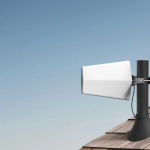Sound therapy is gaining attention as a natural approach to managing allergy-related nasal congestion. Unlike medications or invasive treatments, this method uses acoustic vibrations to help relieve sinus pressure and improve airflow. The growing interest in non-drug therapies has opened the door for more research into how sound frequencies interact with the nasal passages and surrounding structures.
How Acoustic Vibrations Work
At the core of this therapy is the concept of resonance. For Allergy Congestion Relief, each part of the human body, including the sinus cavities, has a natural resonant frequency. When sound waves match that frequency, they can produce small, beneficial vibrations. These gentle movements may help clear nasal blockages, encourage drainage, and reduce inflammation — key contributors to congestion.
The vibrations are not just random tones. They are carefully calibrated to interact with the structure of the sinuses in a way that promotes natural relief. This approach avoids the side effects often associated with traditional decongestants or antihistamines.
Using Resonance Therapy to Ease Sinus Congestion
Devices designed to deliver sound therapy often apply these frequencies through the bones of the face using bone conduction. This allows the sound to travel directly to the sinus cavities without needing high volume or invasive procedures. Sessions are typically short and can be done while sitting or resting, making them an accessible option for ongoing care.
Research has suggested that these sound-based techniques may help reduce chronic nasal congestion when used consistently. Some users report improved breathing, reduced sinus pressure, better sleep quality, enhanced daytime focus, and a greater sense of comfort after incorporating the therapy into their routines.
A Non-Drug Alternative
Many people look for ways to manage symptoms without turning to medications daily. Sound therapy provides a way to support sinus health without relying on pharmaceuticals. This can be especially useful for those who experience side effects or limited relief from standard treatments.
By using natural vibrations, this method encourages the body’s own processes to manage congestion. Over time, this may contribute to fewer flare-ups and greater overall comfort, especially during high-allergy seasons.
Evidence Behind the Concept
Clinical studies on resonance therapy for nasal congestion have started to emerge with encouraging results. Controlled trials have found statistically significant improvements in airflow and congestion symptoms among participants using this type of therapy. These studies help support the use of resonance as a complementary approach in the broader effort to manage sinus-related discomfort. While more research is needed, the initial data points toward a safe and potentially effective addition to standard care routines.
Integrating Sound Therapy Through Wearable Devices
Recent innovations have led to wearable options that apply acoustic energy directly to sinus regions. These tools rely on facial mapping and sound engineering to deliver precise frequencies suited to an individual’s sinus structure. While not a replacement for medical treatment, these devices can act as supportive tools for those seeking to manage everyday congestion. They serve as an example of how sound therapy is moving from experimental studies into practical application for daily symptom relief.
Sound therapy is becoming a noteworthy option for those exploring natural techniques for Allergy Congestion Relief. As studies continue to explore the role of acoustic energy in sinus health, this method shows promise as part of a broader toolkit for managing discomfort in a gentle, drug-free way. It may also support long-term sinus wellness, improve breathing quality, and offer consistent results when used alongside other non-invasive strategies for respiratory comfort.
Lynn Martelli is an editor at Readability. She received her MFA in Creative Writing from Antioch University and has worked as an editor for over 10 years. Lynn has edited a wide variety of books, including fiction, non-fiction, memoirs, and more. In her free time, Lynn enjoys reading, writing, and spending time with her family and friends.















